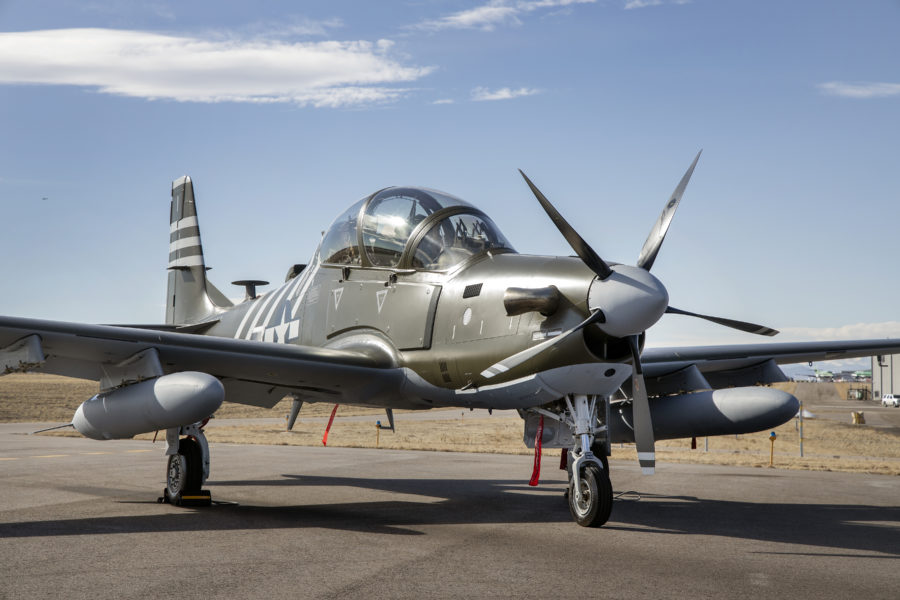Sierra Nevada Corp. and Embraer Defense & Security on March 29 unveiled the latest A-29 Super Tucano headed to Air Force Special Operations Command, painted in a unique livery referencing the early lineage of air special operations.
The A-29 is painted in the color scheme of P-51 Mustangs and P-47 Thunderbolts flown by the U.S. Army Air Forces during the 1944 campaigns in China, Burma, and India, according to a Sierra Nevada release. The airplane is painted dark green, with five “Air Commando” stripes, which are also used in the emblem of AFSOC’s 371st Special Operations Combat Training Squadron.
AFSOC purchased three of the A-29s, to be used to train foreign troops at Hurlburt Field, Fla. Two of the aircraft are undergoing modifications at a Sierra Nevada Corp. facility in Colorado, with the third being assembled at Embraer’s production facility in Florida, according to the release.
The purchase of the three A-29s, along with three Textron Aviation AT-6s for Air Combat Command, is the last step emanating from the Air Force’s “light-attack experiment,” which began in 2017. That experiment evaluated multiple aircraft for a potential large-scale procurement to be used for close air support in austere locations, but it did not become a full acquisition program.
ACC will use its AT-6s for future light-attack experiments, along with the Marine Corps and other nations, to evaluate common architecture and intelligence-sharing networks, according to the Air Force. An AT-6 was delivered to the Air Force in February, and the aircraft featured green camouflage patterns reminiscent of the A-10 during 1980s and 1990s campaigns, including Desert Storm, according to photos from the Air Force Life Cycle Management Center.
